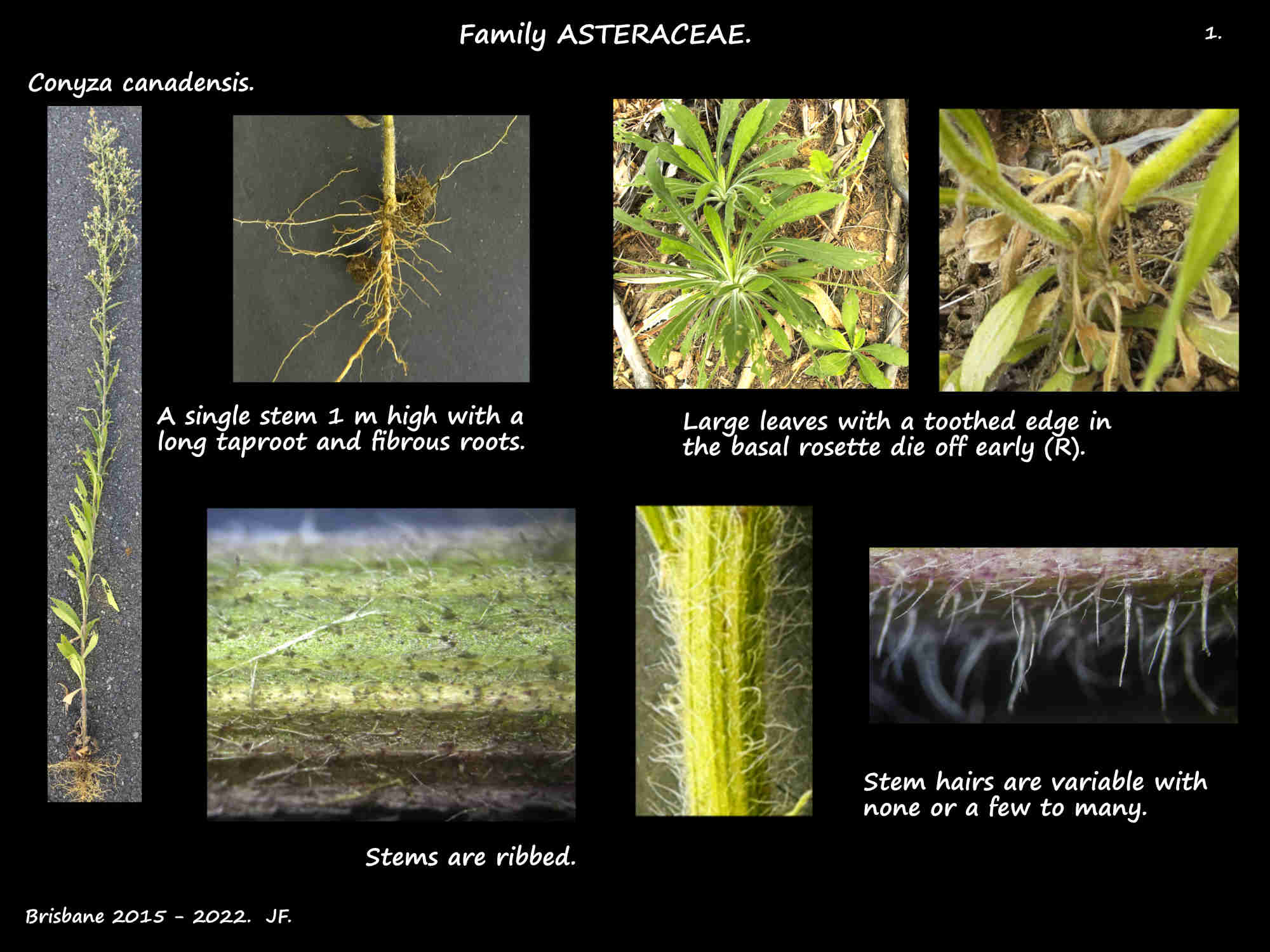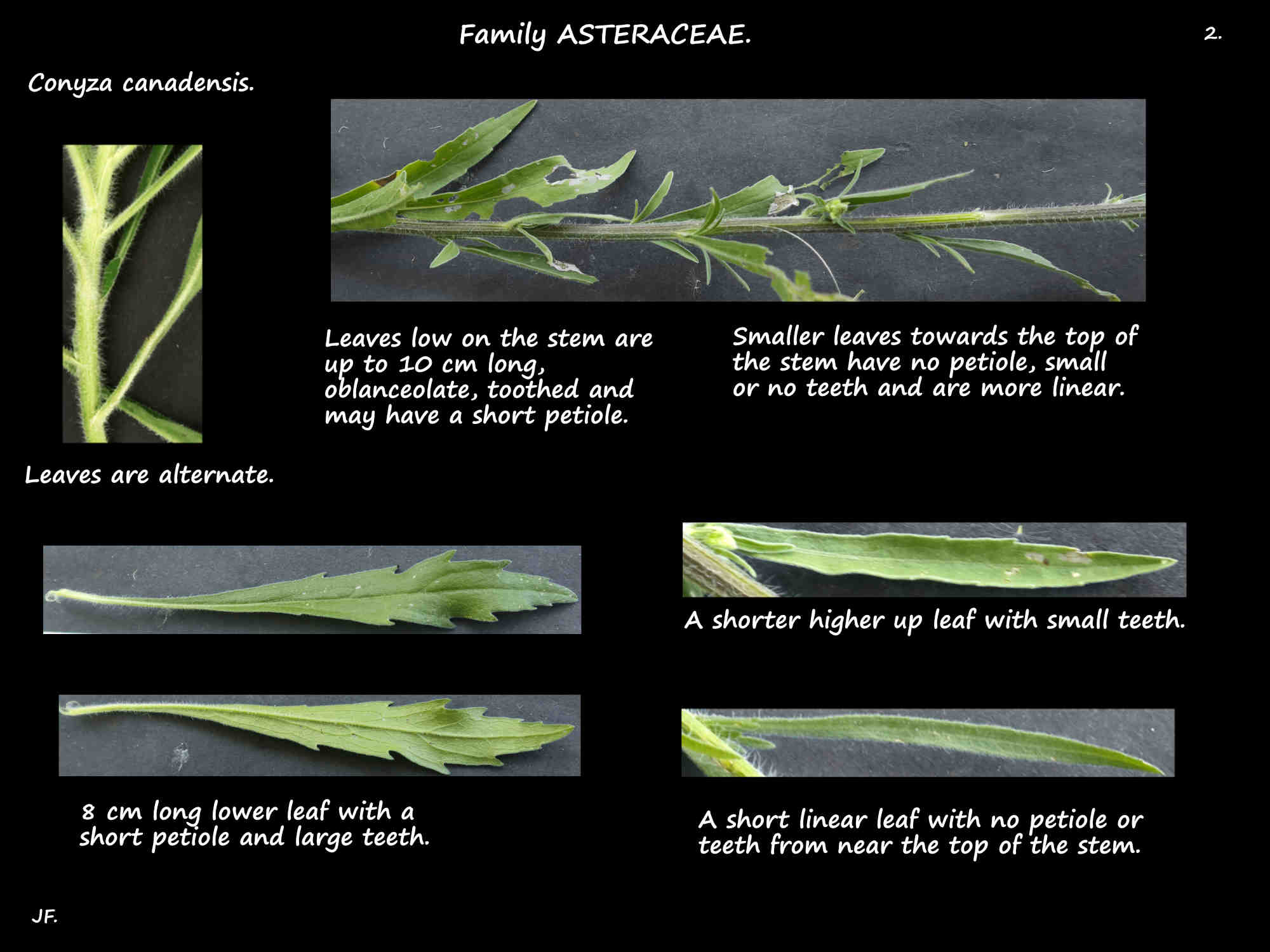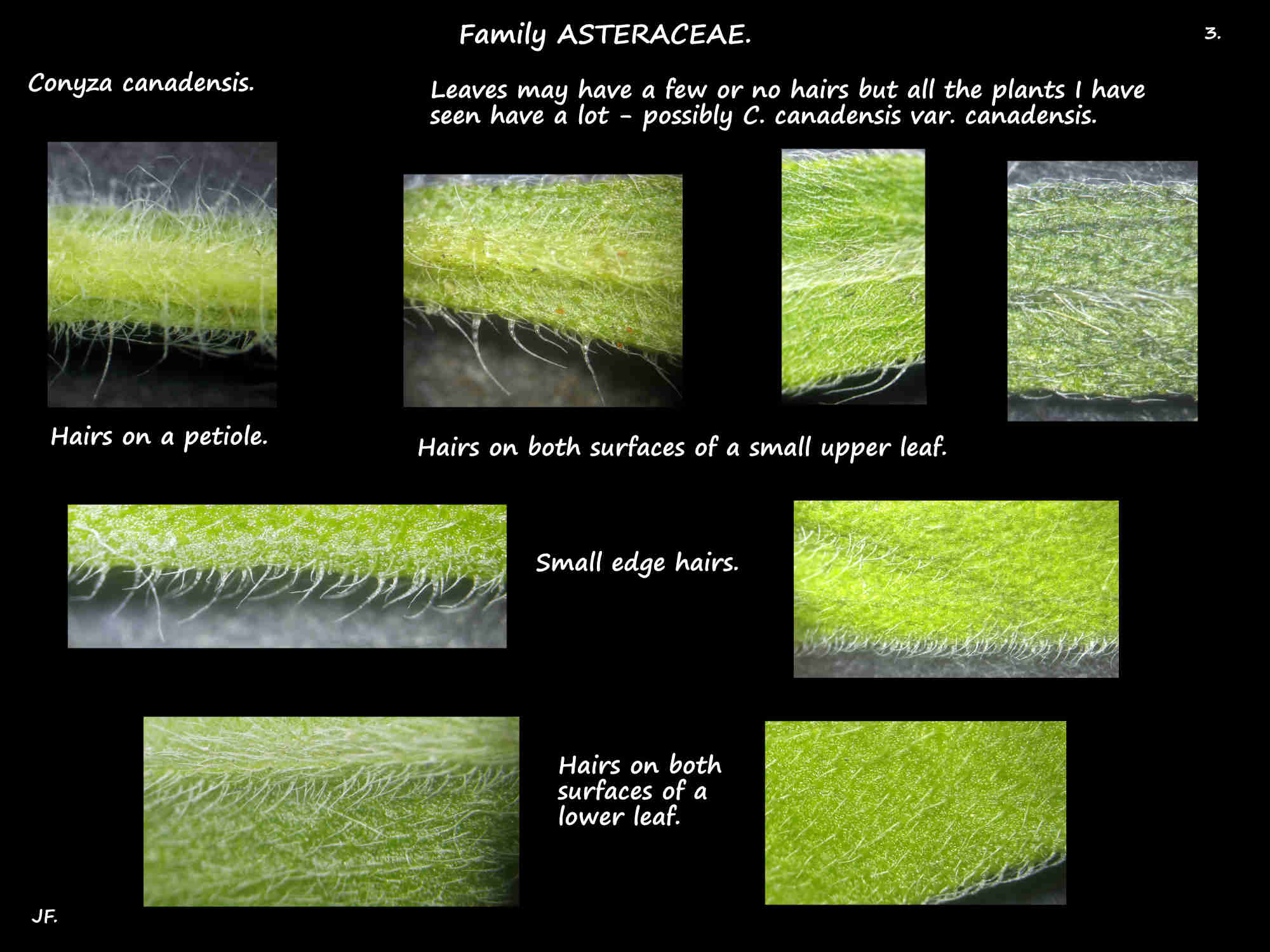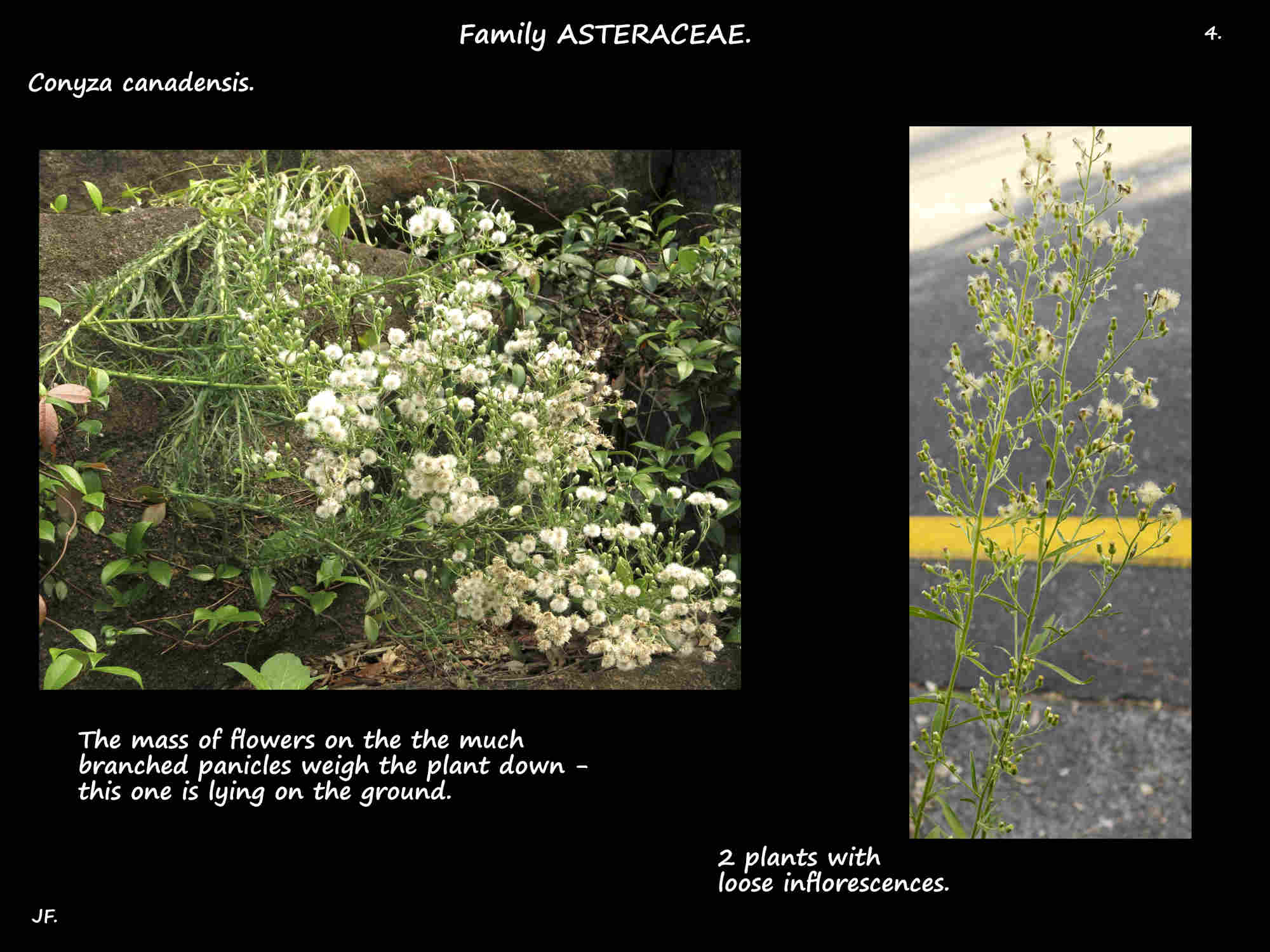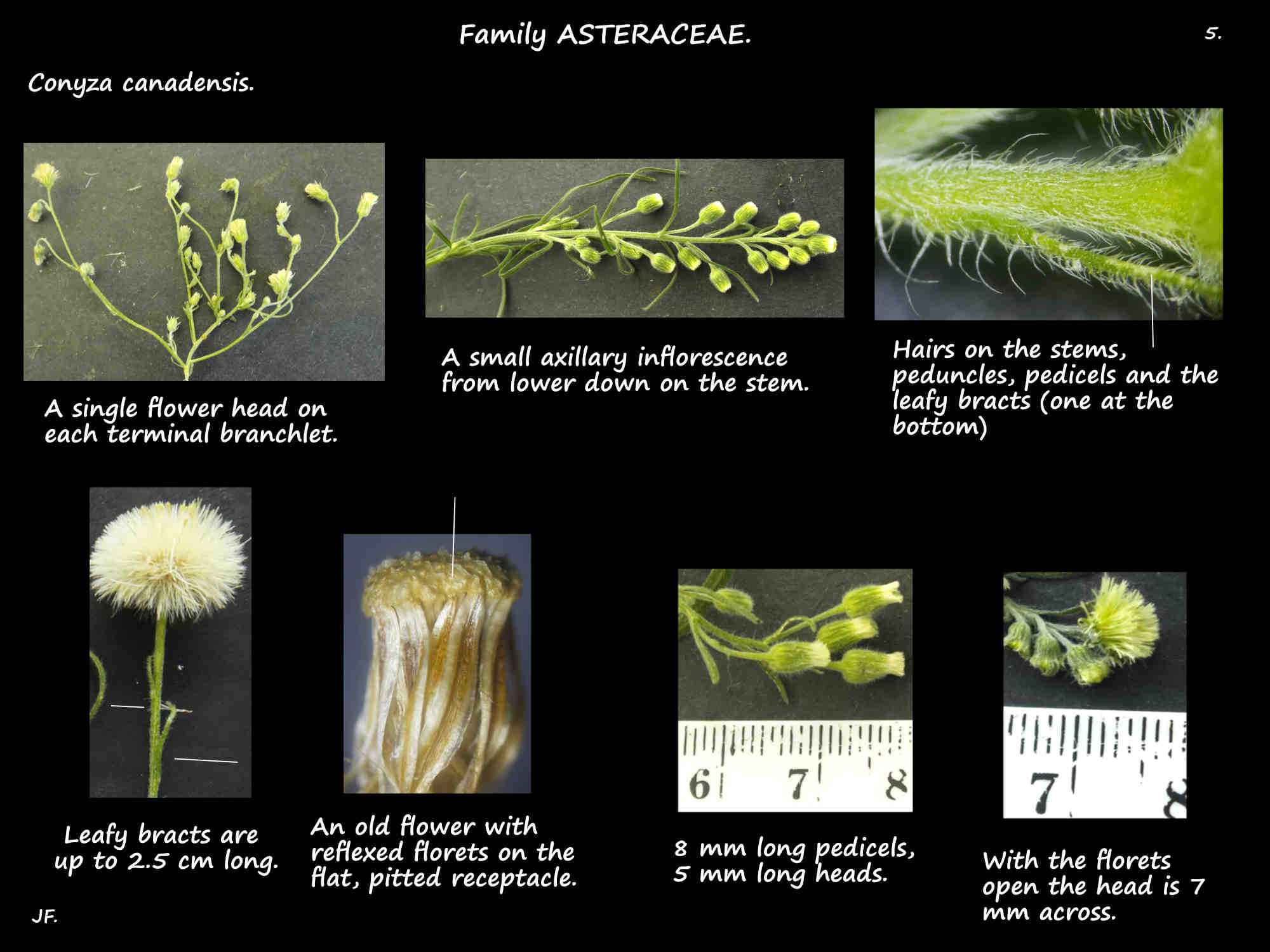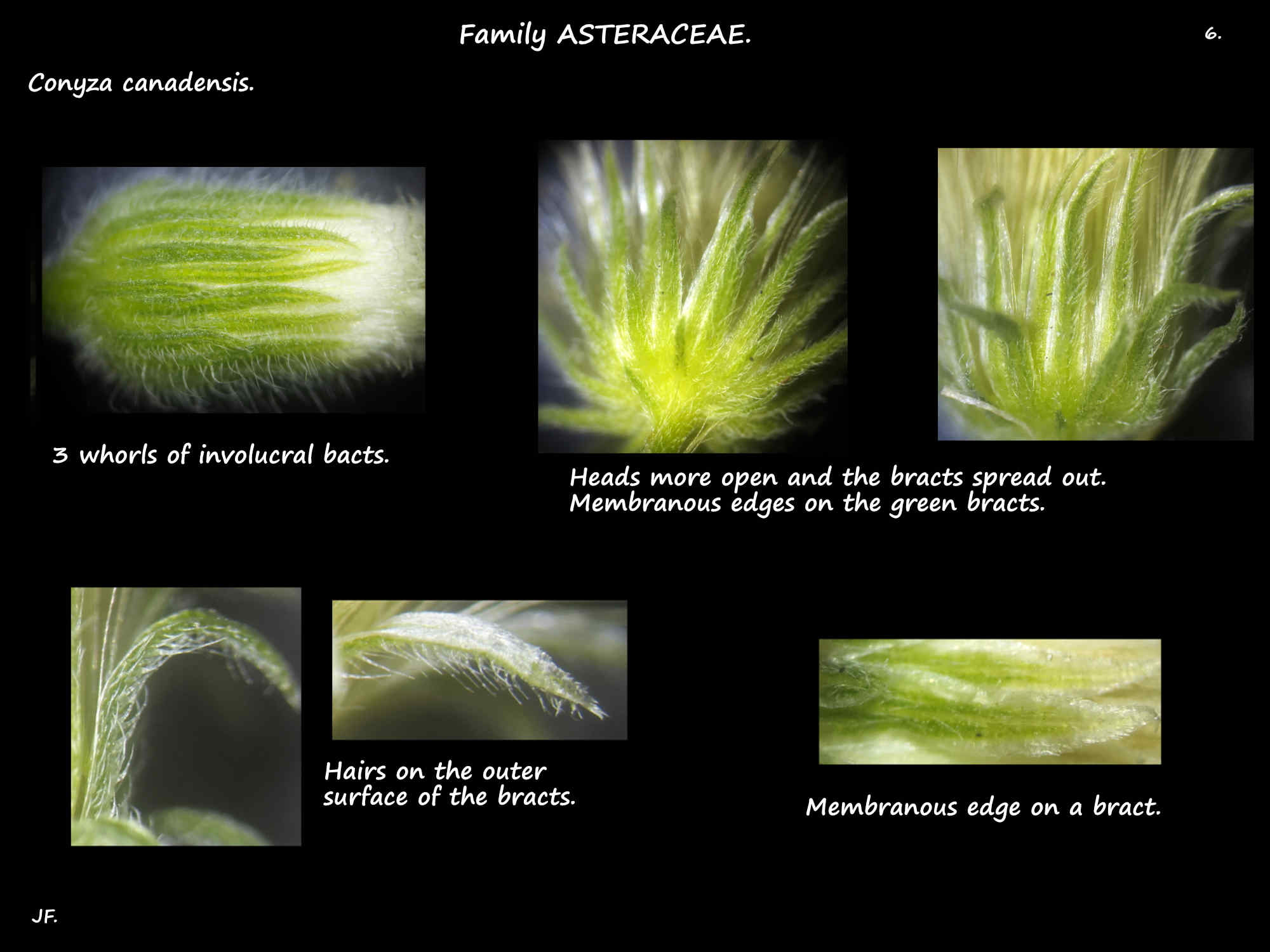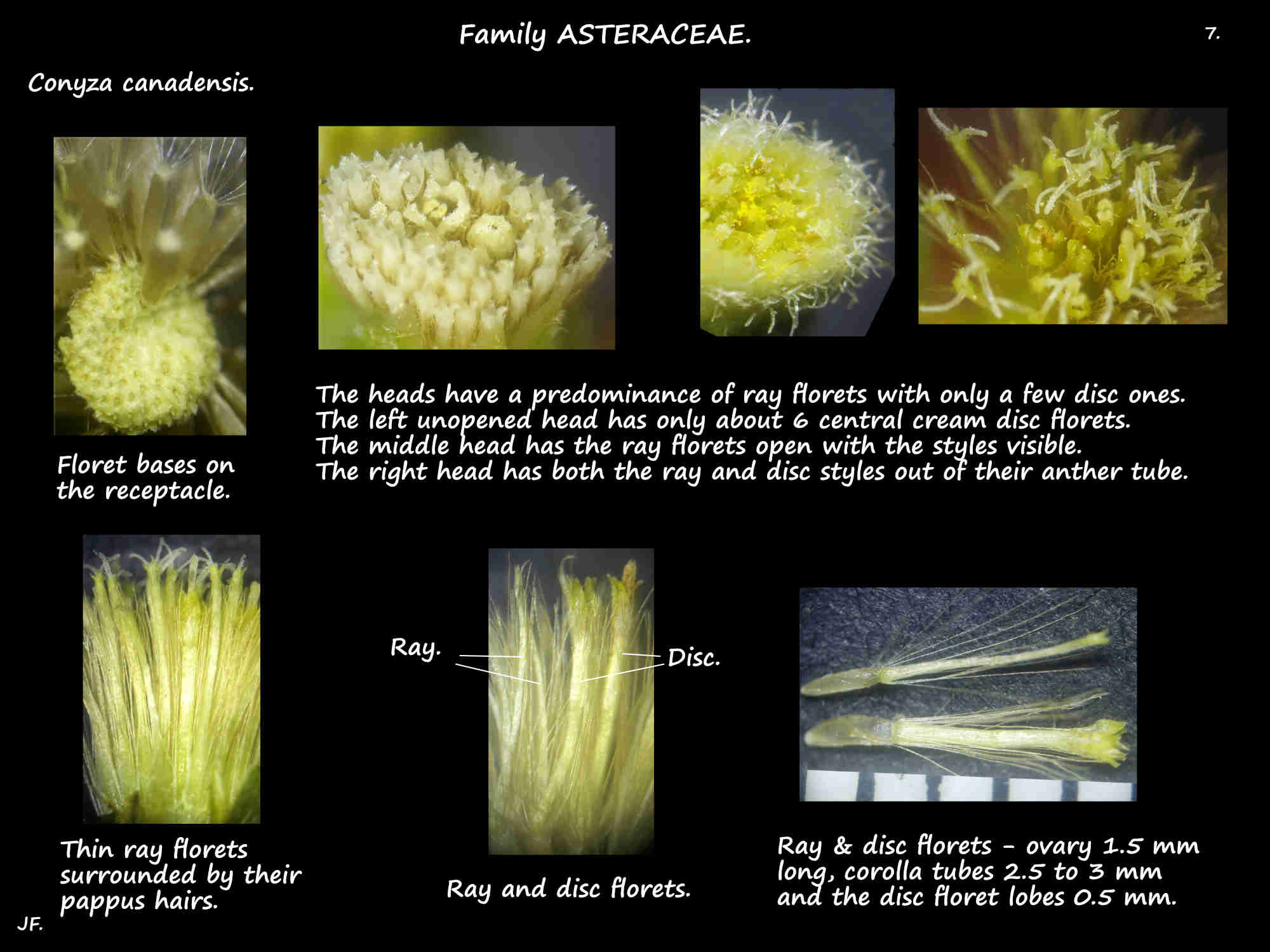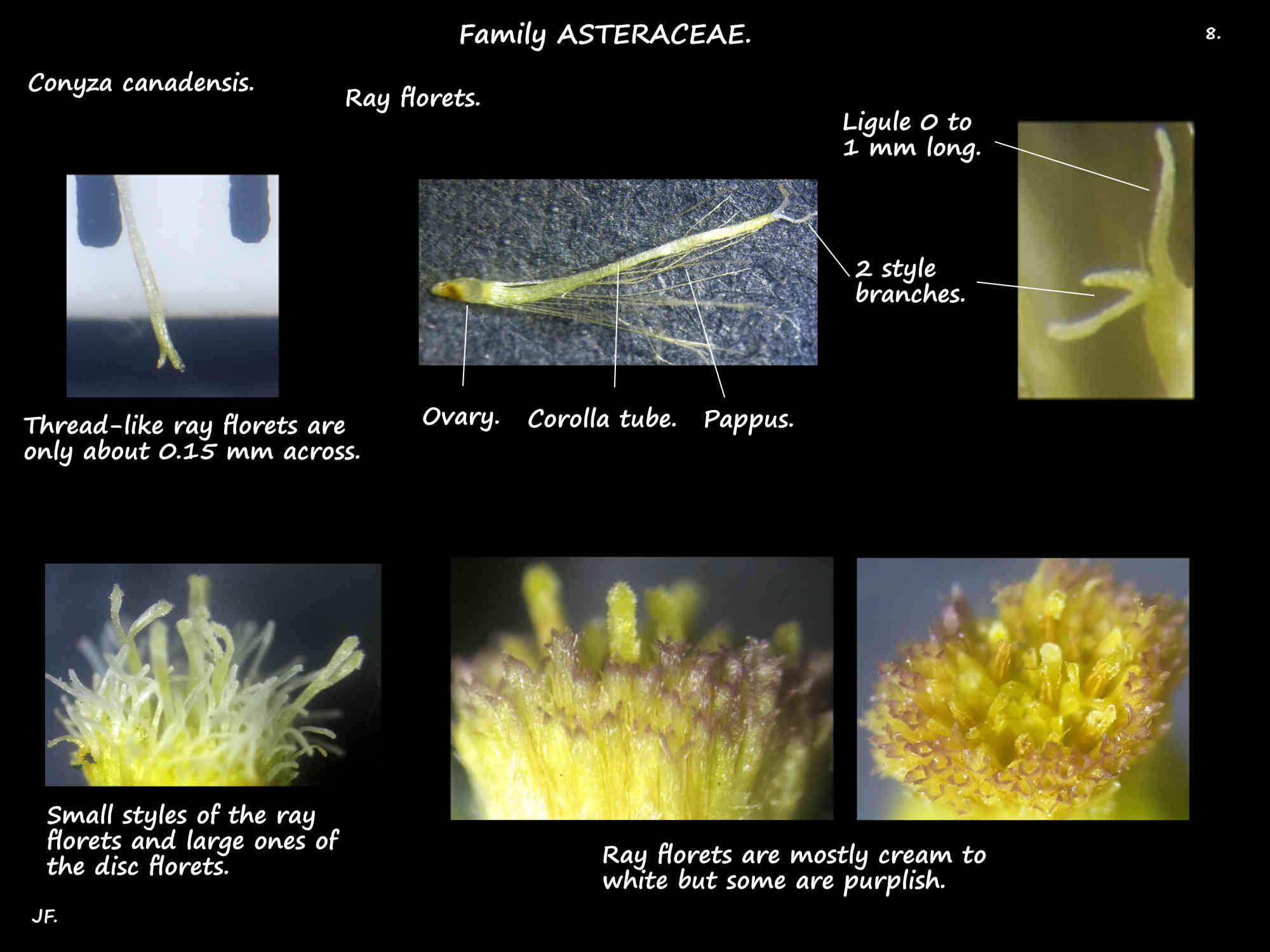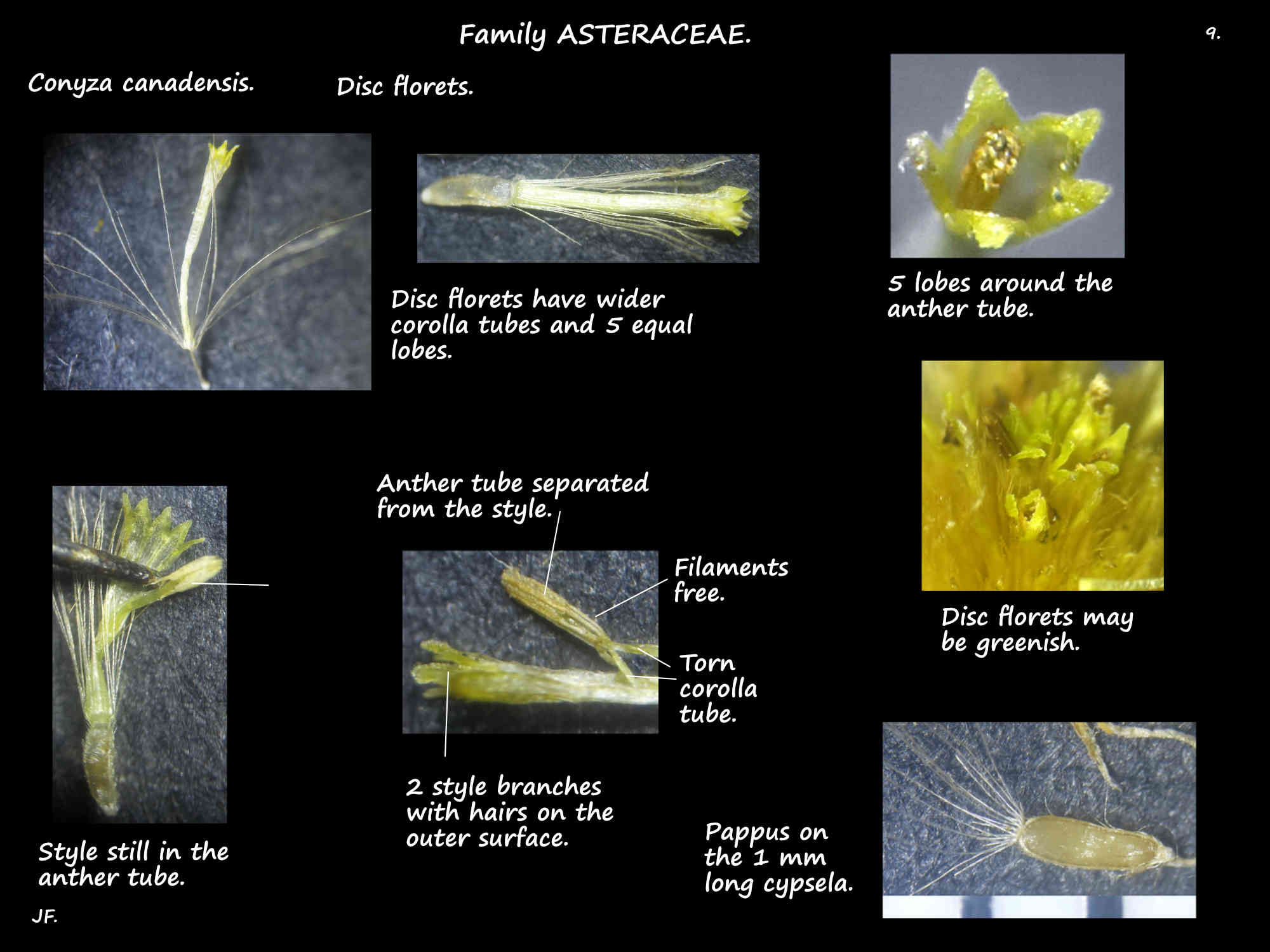Conyza canadensis.
The Plant List recognises around 153 species and nearly 200 synonyms.
There are 7 or 8 Fleabane species naturalised in Australia and 2 native ones.
Erigeron canadensis is an old name but still used in some places and Conyza parva is another synonym.
Canadian horseweeds are erect annual herbs up 1.5 or 2 m high growing from a taproot with fibrous roots.
There is usually only 1 (2) stem and the only branches are those near the top with flowers.
The ridged green stems have no hairs or a few to many white ones.
The simple, crowded leaves are alternate.
The larger seedling leaves form a basal rosette but these usually die off as the plant grows.
The lower adult leaves may have a short petiole but the upper leaves have none.
Leaves are up to 10 cm long and 1 cm wide with the upper ones being smaller.
The lower leaves are elliptic, oblanceolate or narrowly lanceolate while the upper ones are more linear.
The leaves may be entire but typically the lower leaves have a few teeth.
The upper leaves usually have no teeth but may have a few fine ones.
Leaves may have no hairs or just a few on one or both surfaces.
They have long white hairs at the base of the blade and short stiff ones on the margins and veins.
The large, terminal inflorescence is usually a loose pyramid shaped panicle.
It is much branched and there are narrow, hairy, green leaf-like bracts up to 2.5 cm long.
There may also be small slightly branched panicles in the axils lower down the stem.
The green or reddish stems, the 6 mm long peduncles and the 2 to 10 mm long pedicels have short hairs.
Each terminal branchlet holds a solitary head composed of many tiny florets.
They are on a flat or slightly convex receptacle 1.5 mm wide that has a rough and pitted surface.
The hemispherical or bell-shaped heads are 4 to 5 mm long and up to 7 mm wide when fully open.
The involucre consists of 2 to 4 whorls of overlapping phyllaries (bracts).
They are oblong, lanceolate to linear and from 2 or 3 mm long in the outer whorl up to 5 mm in the inner.
The outer ones are greenish to pale brown and the inner are more reddish and the edges of both may be membranous.
They are usually smooth but may have some short hairs.
The heads may appear to be of a single type of floret as there can be up to 40 ray florets and as few as 8 disc ones.
The thread-like ray florets have five petals with the bases fused into a corolla tube surrounded by a pappus of fine bristles.
The ligule (lobe) can be up to 1 mm long but is often much shorter or absent.
Florets are mostly white to cream but sometimes the tops are purplish.
Ray florets are female with a superior ovary and a single bifid style that just extends past the corolla tube.
There are no stamens.
The pale yellow or greenish bisexual disc florets have 5 equal triangular lobes on the corolla tube.
There are hairs on the inner surface of the lobes.
Bisexual flowers have 5 stamens with the basifixed anthers fused into a tube.
The anthers have blunt apical appendages.
Female and bisexual flowers have an inferior ovary with basal placentation of the single ovule.
The style has 2 branches with linear stigmas on the inner surface, glands on the outer surface and an apical appendage.
The fruit are a flattened cypsela commonly referred to as an achene.
It is about 2 mm long, slightly hairy with the 2 to 4 mm long pappus bristles still attached.
Some authorities recognise 2 varieties:
a.) Conyza canadensis var. canadensis have coarse, spreading hairs on the stems and the tips of the involucral
bracts do not have a purple dot.
b.) Conyza canadensis var. pusilla has a hairless or almost hairless stem and some phyllaries have a purple dot at the tip.
J.F.
